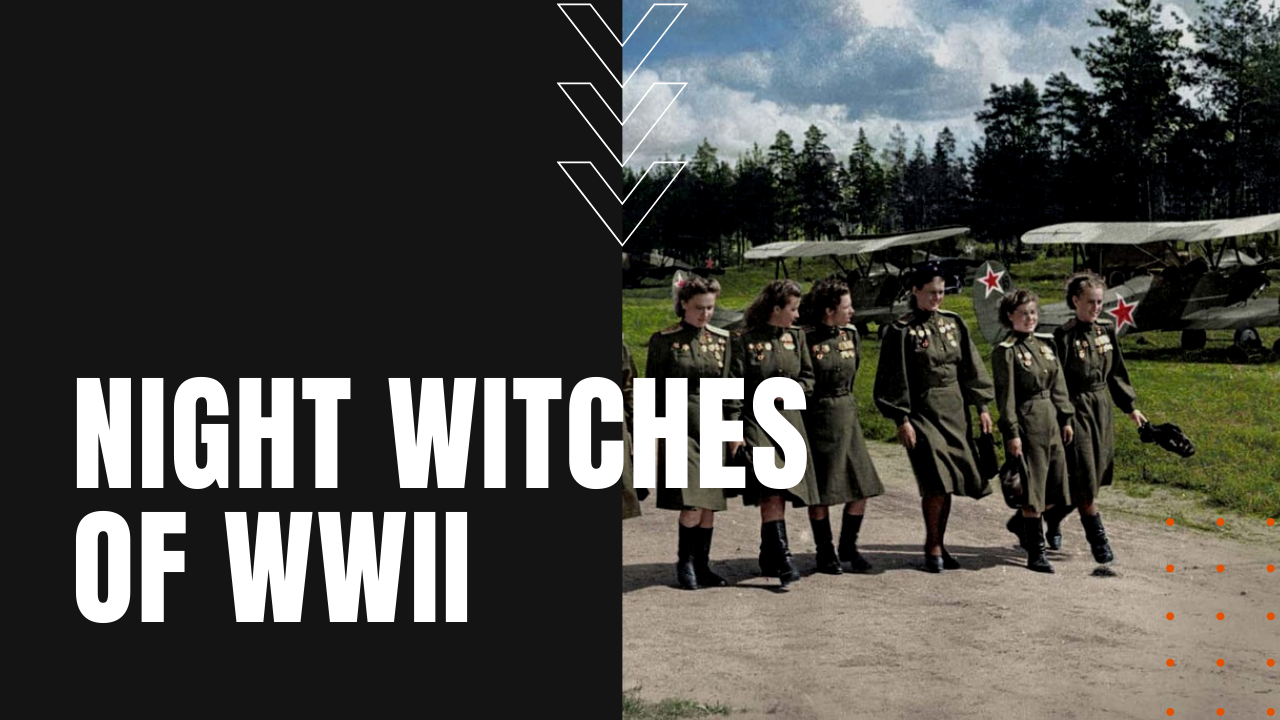Night Witches of World War Two

When Adolf Hitler launched his invasion of the Soviet Union in June of 1941—code-named Operation Barbarossa—the Soviets were desperate for any means of pushback against the advancing Nazi army. Known as the “Soviet Amelia Earhart,” record-breaking female aviator Marina Raskova proposed an all-female bomber force, and when Soviet leader Joseph Stalin gave her the nod, Raskova quickly set about building out her team of daring fliers.
Who Were the Night Witches?
Of the 2,000 applicants—mainly women who had lost brothers and sweethearts to Nazi aggression—Raskova hand-picked 400 for advanced flight training, which would be compressed into months rather than years. Flying under the cover of darkness in bare-bones Polikarpov World War One-era biplanes, the women braved bullets and frostbite in the air, while receiving skepticism and sexual harassment back on the ground.
Named Nachthexen or “night witches” by the Nazis, due to the broom-like whooshing sound their planes made during bombing runs, the all-female 588th Night Bomber Regiment became a crucial element of the Soviet’s offensive strategy.
How Night Witches Operated
Outfitted in oversized male uniforms and boots, the night witches flew in teams of two—a pilot up front, the navigator and bombardier in the rear—flying without parachutes or radios, the later making them nearly impossible to spot using ground-based radio locators.
Their open-cockpit biplanes gave the women no protection from the frigid conditions aloft, forcing the women to contend with wind and frostbite on a nightly basis. During the bitterly cold Soviet winters, the planes became so cold that just touching them without gloves could rip off bare skin. On the plus side, their planes were slower than the stall speeds of Nazi warplanes, making them extremely difficult to shoot down, while on the downside, if one of the plywood and canvas planes did take on incendiary fire from the enemy, the old planes would burst into flames and fall from the sky.
With a payload of only two bombs per plane, the regiment sent up 40 planes per mission, executing between eight and eighteen missions a night. The night witches traveled in formations, sending a single bait plane over the target in advance to attract German defensive spotlights, which further helped the bomber formation locate their targets. After the bait plane dropped a flare to illuminate the intended drop zone, the bombers would idle their engines to glide in over their target, which was a stealth tactic that gave the night witches their signature witch’s broom sound.
All told, the night witches dropped 23,000 tons of bombs on Nazi frontline positions, making the Soviet Union the first country in the world to allow women in combat. By the end of the war, the night witches flew more than 30,000 missions, losing 30 pilots before their last flight on May the 4th, 1945, making the night witches a crucial asset in the Allies victory over Nazi aggression.
